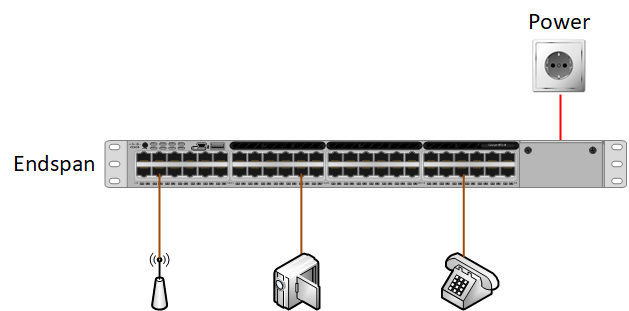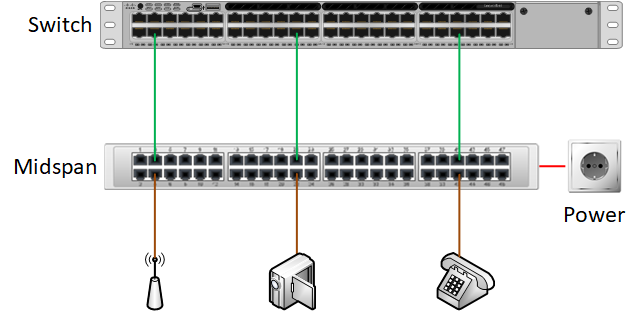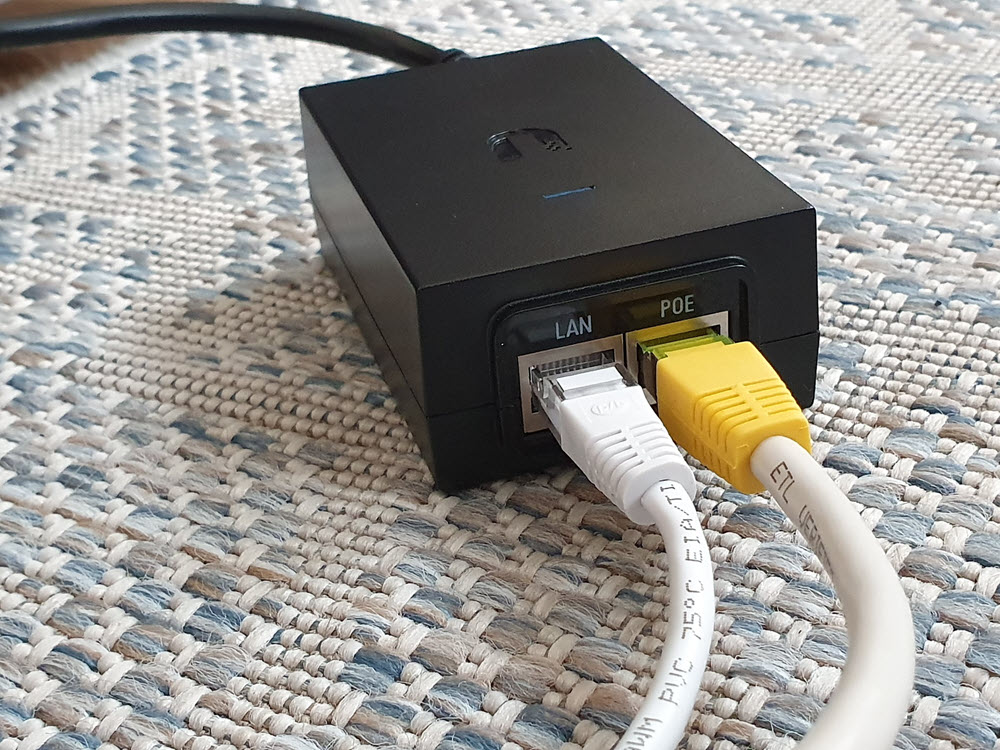Power over Ethernet (PoE) is a technology we use to power devices through regular Ethernet network cables.
PoE was invented when the first VoIP phones were introduced. Analog phones are powered directly through the same copper wires we use for voice calls.
VoIP phones use Ethernet cables without power, so they required a power adapter. Our old analog phones only required one cable, the VoIP phones two. This was a step backward, which is why PoE was invented.
PoE took off a few years later when vendors also started using PoE for wireless access points.
Nowadays, we use PoE for many devices. For example:
- VoIP phones
- IP cameras
- Wireless access points
- IoT devices
- PoS devices
- Raspberry Pi
- Arduino devices
- Small routers and switches
A device that is powered by PoE is called a powered device (PD).
Midspan and Endspan
How do we put power on an Ethernet cable?
A device that provides power on the cable is called Power Sourcing Equipment (PSE). We have two options:
Endspan
The PoE endspan method uses a switch with integrated PoE. You connect your end device to the switch, and it will detect whether the end device is PoE compatible and, if so, enables power automatically.
PoE switches come in multiple sizes. There are unmanaged switches with ~4 ports or large managed switches with dozens of ports.

Midspan
The PoE midspan method uses PoE injectors to add PoE to regular non-PoE links. You can use these to add PoE to your network without adding or replacing your non-PoE switches. These are (usually) intelligent devices, and like a PoE switch, they detect whether the PD requires power and, if so, enables power. PoE injectors are useful when you only have a few devices you want to power.
There are (rackmount) midspans that can power many cables:

Or small PoE injectors you can use to power a single device:

Pros and Cons
Should you use an endspan or midspan solution? Some items to consider:
- With a midspan solution, you have two devices to manage: the switch and the midspan. You require extra space in your rack, or you have multiple PoE injectors lying around. You also have two devices instead of one PoE switch. The more devices, the higher the chance that something fails.
- Midspan is useful if you have relatively new switches, and you don’t want to replace them. Replacing your switches only to get PoE is an expensive solution.
- On the other hand, endspan PoE switches have a limited amount of power they can provide. You might be unable to use maximum power on all switch ports.
Types and Standards
Cisco was the first company to introduce PoE in ~2000. It was proprietary technology where Ethernet cables carry 48 VDC to power VoIP phones.
There are multiple PoE options: Some proprietary, some are standards. IEEE is responsible for creating many Ethernet standards under the 802.3 working group, and they wanted to develop a standard for PoE as well.
There are multiple PoE types; these are based on IEEE standards. And have different names. Let’s take a look.
Type 1
Type 1 is also known as PoE or 2-pair PoE. Type 1 is the first PoE standard (802.3af) from 2003 and provides up to 15.4 W of DC power to each device. Only 12.95 W is guaranteed because of cable loss. You can use CAT3 or CAT 5 cables, and it uses 44-57 VDC and 350 mA.
Type 1 is useful for VoIP phones, dual-radio wireless access points, and IP cameras without pan, tilt, or zoom (PTZ) features.
Type 2
The second PoE standard (802.3at) is from 2009 and called PoE+ or PoE Plus. PoE+ can provide up to 25.5 W, 50-57 VDC, and 600 mA to a PD and requires CAT 5 or higher. It’s backward compatible with type 1.
Type 2 is useful for devices that require more power than type 1 could supply. Examples are IP cameras with PTZ features, wireless access points with more than three radios, but also LCD monitors or tablets.
Type 3
The third PoE standard is based on a non-standard proprietary Cisco implementation from 2014 called Universal Power Over Ethernet (UPOE).
This PoE implementation later became the 802.3bt standard, which was ratified in 2018.
Type 3 is also known as PoE++, 4PPoE, 4-pair PoE, Ultra PoE, or High-Power PoE. Type 3 uses all four wire pairs and supports twice the power of type 2. Up to 60 W, up to ~51 W for each device.

No comments:
Post a Comment